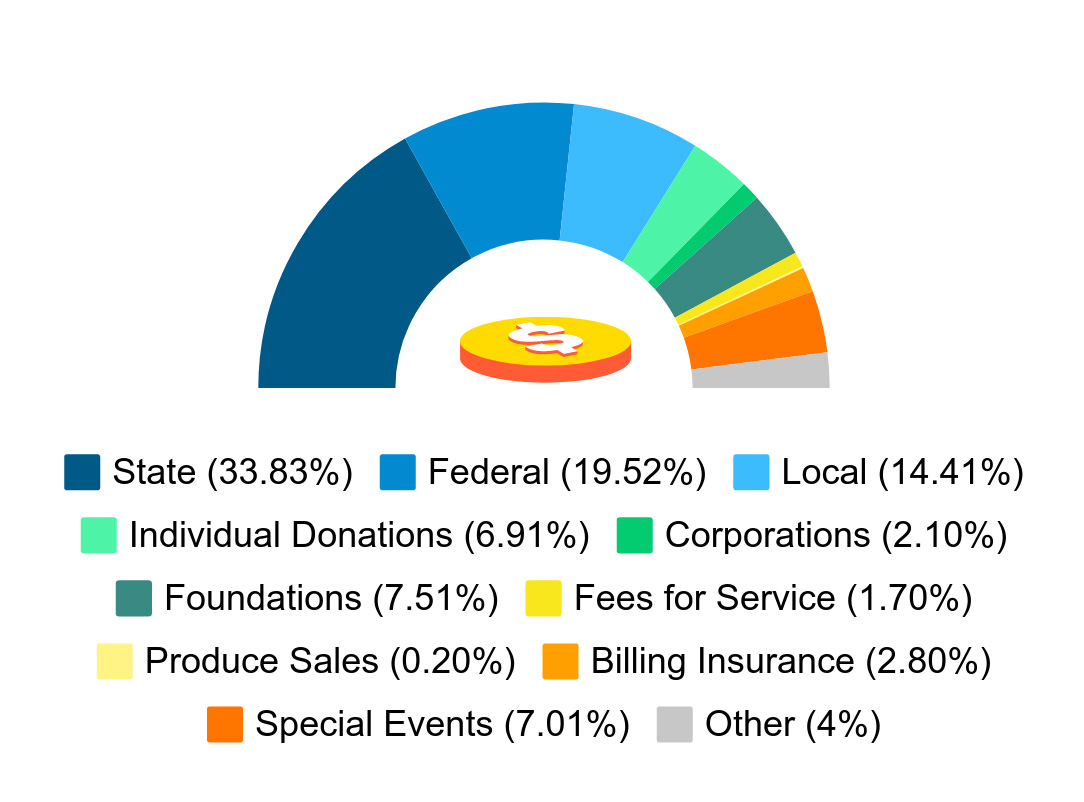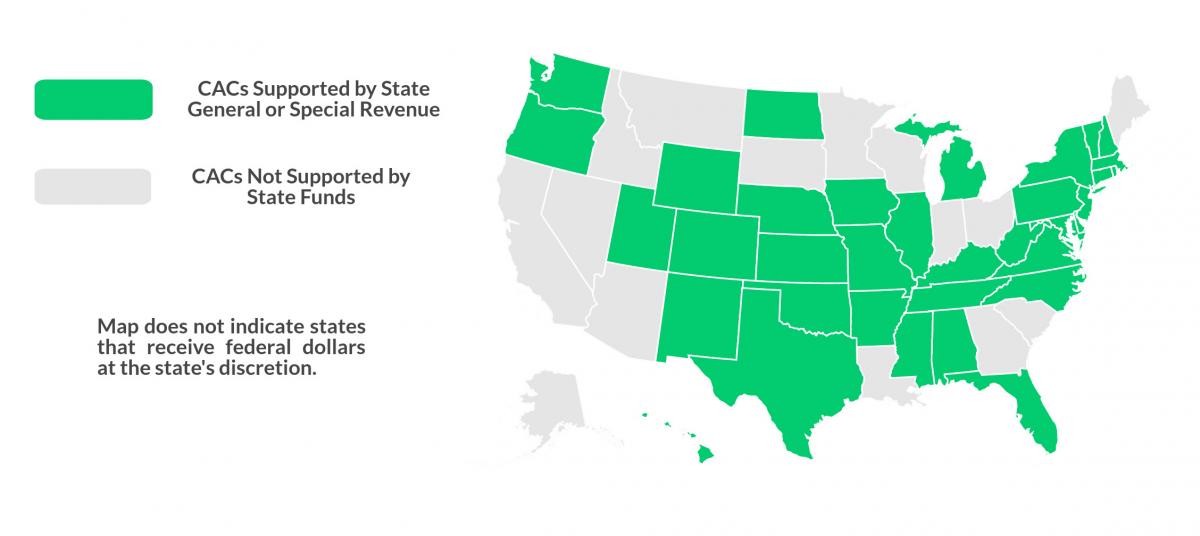An NCA Policy Brief
Diverse funding is essential to the long-term sustainability of the CAC movement, including state funding support. States should have an interest in adequately funding CACs. Here’s how CACs can build their knowledge of state funding and make the case to legislators.
CAC Funding by Category |
The 3 Types of State Funding
|

State support accounts for a third of all CAC funding. |
Which states’ CACs are supported through state general or special revenue?

A Strategic Approach to Secure State Funding Support
Chapter organizations are the critical link for supporting CACs in securing state funding support. By effectively organizing the advocacy efforts of their members to develop relationships with and educate policymakers, state Chapters are well positioned to pursue financial support from state government. Here are three recommendations to get your started on your state advocacy work.
 |
It is recommended that Chapters and CACs first focus on securing federal funds over which the state has discretion. The funds are already in place and are for purposes consistent with our efforts. Also, because they rarely require legislative involvement, they can be pursued outside of the legislative session. Our research shows that the number one indicator of success in this area is a good relationship between CACs and the agency administering the funds. Chapters should work to establish and foster these relationships. |
 |
To secure General Revenue funding, Chapters should focus their efforts on key members of the legislature responsible for the appropriation of funds. Chapters should draw upon their membership who provide services in these members’ districts to educate members about CACs and to develop relationships that build support for our cause.
|
 |
Securing a source of Special Revenue is a more involved process because it requires the adoption of legislation. Special Revenue is the best option when budgetary constraints make securing General Revenue difficult. An NCA survey of Chapters found that at least 12 states have a Special Revenue stream in place.
|
Special Revenue ExamplesColorado, Oregon and Washington impose a fine or surcharge on perpetrators of crimes against children which generates anywhere from $300,000 in CO to $5 million in OR for CACs/MDTs annually. Arkansas imposes an additional $0.01 tax on alcohol sales, a portion of which, over $1.5 million annually, is dedicated for CACs. Pennsylvania recently adopted legislation imposing an additional $10 fee for duplicate birth certificates. It is expected to generate $2 million annually for CACs. |
|
Next Steps
Once established, state government funds tend to be secure and stable with opportunity for growth. Strong state support helps leverage additional dollars from other sources. States have an obligation to investigate crimes against children and studies show the CAC/MDT model to be the most efficient and cost effective way to do so. States should have an interest in ensuring that every child victim and family has access to a CAC.
To develop a customized strategic plan for the pursuit of state funding support, State Chapter can contact the NCA Government Affairs Department. Email Will Laird at wlaird@nca-online.org to start your plan now.

